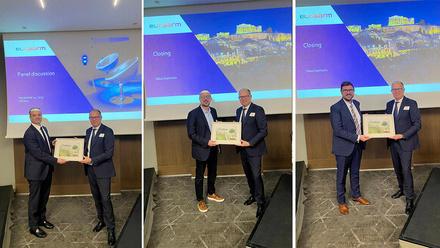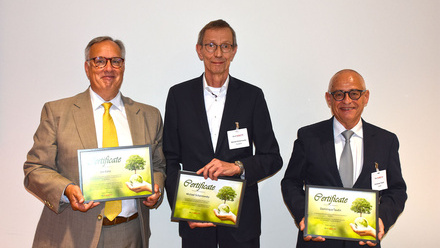Euralarm workshop sheds light on new EU packaging rules (PPWR)
The session, hosted by Chris Downing, Chair of Euralarm’s Horizontal Compliance Committee task group E&S, featured Sévrine Pereira, representing EUROPEN – the European Organization for Packaging and the Environment.
The event provided clarity on how the new regulation will reshape packaging requirements and sustainability obligations across the EU market.
From Directive to Regulation: a major change
Sévrine opened by outlining the fundamental shift: after three decades under the Packaging and Packaging Waste Directive, the EU has now adopted a Regulation, which applies directly in all Member States without the need for national transposition. The PPWR Entered into Force in February 2024, but will begin applying from 12 August 2026 after an 18-month adoption period. “Moving from a Directive to a Regulation is a crucial step toward greater harmonisation,” Sévrine explained. “But we must note that some flexibility remains for Member States to go beyond the baseline requirements.”
Key sustainability requirements
The PPWR introduces a comprehensive set of sustainability requirements that will directly impact businesses placing packaging or packaged products on the EU market. Among the most important are:
- Restrictions on substances – Packaging must comply with strict limits on some formulations, e.g. heavy metals and, in certain cases, PFAS substances.
- Recyclability by design – Latest dates when all packaging must be designed to be recyclable.
- Effective recyclability – Latest dates when packaging must be capable of being recycled “at scale.”
- Minimum recycled content – Targets of 35% by 2030 and 65% by 2040 but local regulations could call for sooner.
- Minimisation and empty space – When packaging weight and volume must be reduced to the minimum necessary; grouped and transport packaging must not exceed a 50% empty space ratio.
- Reusable packaging – Packaging must be designed for multiple rotations and remain recyclable at end of life.
- Labelling harmonisation – A single EU-wide system for sorting instructions and reusable packaging labelling will be introduced, including the use of digital markings such as QR codes.
Packaging waste prevention and reuse targets
The regulation also introduces restrictions on certain single-use packaging, including some grouped plastic formats used to bundle products.
In addition, reuse targets will apply from 2030, with further (partly aspirational) targets for 2040. Of particular note for the logistics and construction-related sectors are the 100% reuse requirements for pallet wraps and straps, though the European Commission is expected to adopt derogations for these specific formats later in 2025.
Extended Producer Responsibility (EPR)
The EPR principle—the “polluter pays” mechanism—will expand in scope. Producers must pay fees covering the costs of collection, sorting, and labelling of packaging waste bins. Importantly, companies importing packaged goods into the EU will also fall under these rules.
Each Member State will establish a Producer Register, where companies (or their authorised representatives) must register and provide details of the packaging they place on the market. This aims to ensure greater transparency and accountability across the supply chain.
Compliance: a condition for market access
Compliance with Articles 5–12 of the PPWR will be a market access condition from August 2026. Companies must complete a Declaration of Conformity (DoC) based on Annex VII of the regulation and maintain technical documentation for inspection by national authorities.
Documentation must be kept for five years (single-use packaging) or ten years (reusable packaging). Sévrine urged all companies to start preparing now: “Businesses should already be reviewing their packaging portfolios and engaging with suppliers to ensure compliance. Even though many details will come later through delegated acts, preparation cannot wait.”
Next steps and resources
The European Commission is expected to publish clarifying guidance and a FAQ document later in autumn 2025. In parallel, EUROPEN continues to work with stakeholders and has developed a “PPWR Survival Guide” and an online questionnaire to help businesses assess their obligations.
Euralarm encourages its members to:
- Review packaging used for products and shipping.
- Engage with packaging suppliers to confirm upcoming changes.
- Stay informed through EUROPEN’s updates (via LinkedIn or newsletter) and Euralarm’s compliance communications.
The workshop closed with an engaging Q&A session where topics such as biodegradable plastics, digital labelling, and importer obligations were discussed. “This is a massive change,” Sévrine concluded. “It brings opportunities for harmonisation, but also major responsibilities. The key is to prepare early.”
For more information:
Members can access the presentation slides, and the recordings of the workshop through the Euralarm Teams environment. EUROPEN’s “Survival Guide” can be downloaded via this link.





